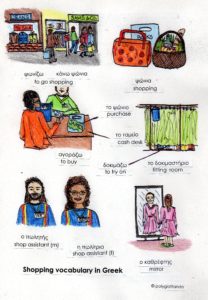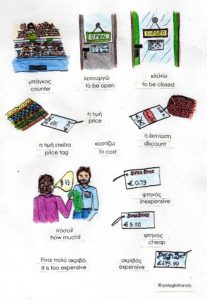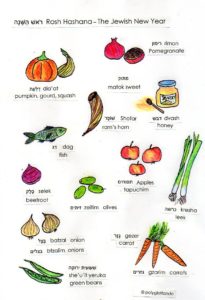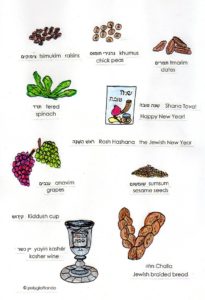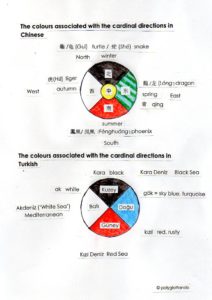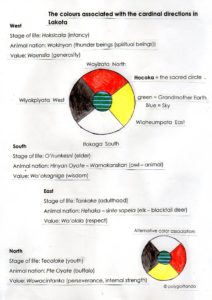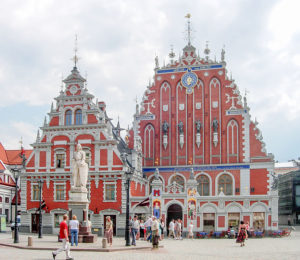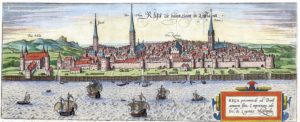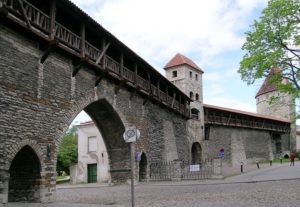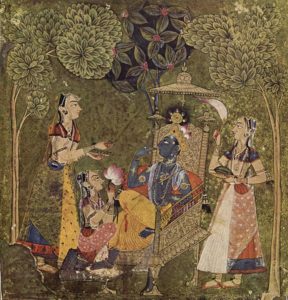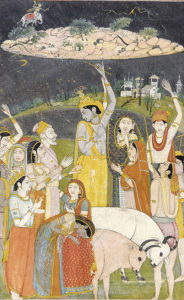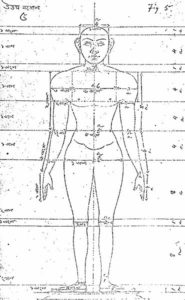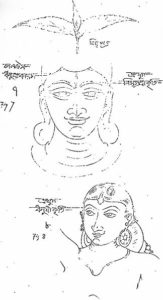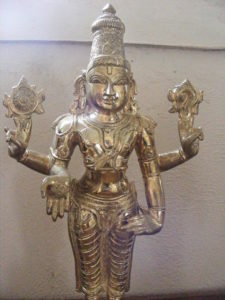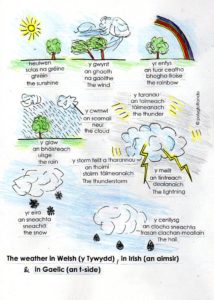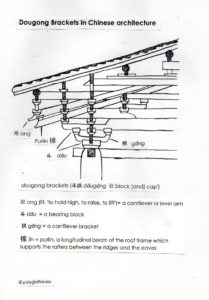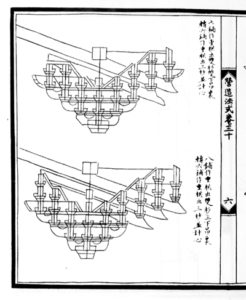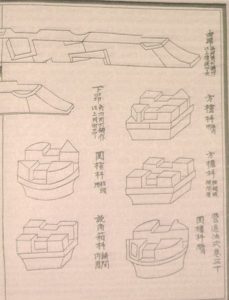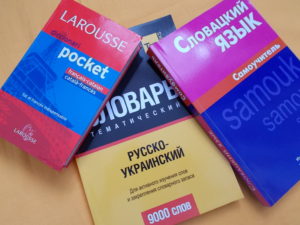Today’s blog post will take us to South Eastern Europe, namely to Greece, and to some vocabulary around the theme of shopping.
Tag Archives: languages
Hebrew vocabulary: Rosh Hashana
This week’s blog post is taking us to Israel and to the Jewish diaspora again and we are going to look at the vocabulary related to the Jewish New Year, Rosh Hashana ראש השנה, which was celebrated this week, and the foods that are usually eaten on this holiday (these vary depending on the country of origin).
Vocabulary: The Environment in Norwegian, Danish and Swedish
Today’s blog post will take us to Scandinavia, and to some thematic vocabulary about a topic of current importance, namely the environment, in Swedish, Danish and Norwegian.
Norwegian/Norsk
Miljøet = the environment
globale oppvarming = global warming
Klimaendringen = climate change
Drivhuseffekten = Greenhouse Effect
utslipp av karbondioksid = carbon dioxide emissions
drivhusgasser = greenhouse gases
havnivåstigningen/ Havnivåendring = sea level rise
økosystemet = ecosystem
biologisk mangfoldet = biodiversity
en truet art = a threatened species
ørkendannelse = desertification
en regnskog = rainforest
avskogningen = deforestation
forurensningen = pollution
sur nedbør = acid rain
holdbar = sustainable
fornybar = renewable
fornybar energy = renewable energy
bærekraft = sustainability
Danish/Dansk
Miljøet = the environment
global opvarmning = global warming
Klimaændringen = climate change
Drivhuseffekten = Greenhouse Effect
Kuldioxidudslippet = carbon dioxide emissions
Drivhusgasser = greenhouse gases
stigende vandstand i havene = sea level rise
økosystemet = ecosystem
biodiversitet = biodiversity
en truet art = a threatened species
ørkendannelse = desertification
en regnskov = rainforest
skovrydningen = deforestation
forureningen = pollution
syreregn = acid rain
bæredygtig = sustainable
Vedvarende = renewable
vedvarende energi = renewable energy
bæredygtighed = sustainability
Swedish/Svenska
Miljön = the environment
Global uppvärmning = global warming
Klimatförändringen = climate change
Växthuseffekten = Greenhouse Effect
Koldioxidutsläppet = carbon dioxide emissions
Växthusgaser = greenhouse gases
höjning av havsnivån/havsnivåhöjning = sea level rise
ekosystemet = ecosystem
den biologiske mångfald = biodiversity
en hotad art = a threatened species
ökenspridningen = desertification
en regnskog = rainforest
avskogningen/skogskövlingen = deforestation
miljöförstöring = pollution
surt regn = acid rain
hållbar = sustainable
förnybar = renewable
förnybar energi = renewable energy
hållbarhet = sustainability
The colours associated with the cardinal directions in Chinese, Turkish and Lakota
Today’s blog post will take us to Asia and America, namely to Chinese, Turkish and the Native American Lakota language. All three languages and cultures associate different colours with the four cardinal directions.
Colours associated with the cardinal directions in Chinese
In China, each of the 4 cardinal directions is associated with a colour, as well as an animal and a season. The centre is yellow and is associated with the human realm. The North is associated with the colour black, as well as winter and a turtle 龜 Guī or snake. The South is thought of as red, and its associated animal is the phoenix 凤凰 Fènghuáng and the summer season. The East is associated with the Chinese colour qing 青, which denotes green as well as blue. (See a previous blog post on colour perception in different languages). Its animal is the dragon 龍 lóng and its season is spring. The West is white, and its animal is the tiger 虎 Hǔ and the season of autumn.
Colours associated with the cardinal directions in Turkish
Also the Turkish language associates different colours with the four directions. The North is thought of as black (kara), the East is associated with the Turkish colour gök, which is a sky blue or turquoise, the South is seen as red (kızıl, a rusty shade of red) and the West is associated with the colour white (ak). What is interesting in Turkish is that the seas surrounding the Turkish peninsula and Anatolia take their names from these colour associations: the Mediterranean, which is west of Turkey, is called Akdeniz, or the White Sea, the Red Sea is Kızıl Deniz, and is located to the south of Turkey (its name is said to come from the rust-coloured sediments flowing into it) and the Black Sea, or Kara Deniz, is north of Anatolia (the Black Sea is also rich in iron sulfides, where only sulphur bacteria can thrive, and its sediments are dark).
Colours associated with the cardinal directions in Lakota
The Native American language Lakota associates not just a different colour with each of the cardinal directions, but each direction also has a value or virtue attributed to it as well as an animal nation, and a stage of life. There are two different systems of colour association, which vary from dialect to dialect. The centre of the sacred circle, or hocoka, is green and blue, the green standing for Grandmother Earth and the blue for the Sky. The North is associated with cold, discomfort and hardship (the direction from which winter comes), the East is associated with the sunrise, the South is the direction from which the sun is strongest, and the West is associated with the sunset and, by extension, the end of life.
Survival vocabulary in Latvian, Lithuanian and Estonian
Today’s blog post is taking us to North-Eastern Europe again, namely to the 3 Baltic countries (Estonian: Balti riigid, Baltimaad, Latvian: Baltijas valstis, Lithuanian: Baltijos valstybės) Estonia Eesti, Latvia Latvija and Lithuania Lietuva and to their respective languages. Estonian belongs to the Balto-Finnic branch of the Uralic languages, whereas Latvian and Lithuanian belong to the Baltic language group of the Indo-European languages.
Survival vocabulary in Latvian
Sveiks (said to a male)/Sveika (said to a female) = Hello
Labdien = Good day/afternoon, hello
Uz redzēšanos! = goodbye!
Jā / nē = yes / no
Paldies = Thank you
Lūdzu = please; you are welcome
Vai jūs runājat latviski/angliski? = Do you speak Latvian/English?
Atvainojiet = excuse me
Piedodiet = sorry, I apologize
Kā jums klājas? = How are you?
Labi, paldies = fine, thank you
Kā jūs sauc? = What is your name?
Mani sauc… = My name is…
Prieks iepazīties! = Nice to meet you!
No kurienes jūs esat? = Where are you from?
Es esmu no… = I am from…
Survival vocabulary in Lithuanian
Labas/ sveiki = hello
Laba diena = good day (‘good afternoon’)
Sudie = goodbye
Taip/ ne = yes, no
Ačiū!/Dėkoju! = Thank you
Prašom! = please; you are welcome; here you are; don’t mention it
Ar jūs kalbate angliškai? = Do you speak English?
Aš nesuprantu = I don’t understand
Kaip gyvuojate? = How are you?
Man viskas gerai = I am fine
Kaip jūsų vardas? = What is your name?
Mano vardas yra… = My name is…
Malonu = nice to meet you
Atsiprašau = excuse me
Atleiskite = sorry
Iš kur jūs esate? = Where are you from?
Aš esu iš… = I am from…
Survival vocabulary in Estonian
Tere = hello
Head aega = goodbye
Jah/ei = yes/no
Vabandage = excuse me; sorry
Aitäh/tänän = thank you
Palun = you are welcome; please
Kas te räägite eesti/inglise keelt? = do you speak Estonian/English?
Kust te pärit olete? = where are you from?
Mis te nimi on? = What is your name?
Minu nimi on…/Ma olen… = My name is…/I am…
Väga meeldiv = nice to meet you
Kuidas läheb? = how are you?
Hästi = fine
Focus on art: Indian aesthetic theory (rasas), murti and concepts of art
Today’s blog post will take us to India भारत Bharat, and to Indian art, कला kala, and aesthetic theory.
Indian art is based on the ancient aesthetic theory of rasa रस (Sanskrit lit. ‘juice’, ‘extract of a fruit’ or ‘essence’) which, by extension, refers to the finest quality of an object. The term rasa रस generally refers to the ‘essence’ and emotional qualities crafted into a work of art (or a performance) by the maker and to the response the contemplation or perception of the artwork evokes in the viewer, or sahṛdaya सह्रदय. So it is a viewer-response theory. Rasas are created by bhavas भव (or states of mind). The concept of rasa has its origins in performance theory. Emphasis is therefore always on the spectator, and the artwork or performer only serves as a means for the viewer to experience the different rasas. That is the reason why in Indian paintings and sculpture a narrative mode predominates: a narrative gradually unfolds over the area of a painting or the length of a wall or even building.
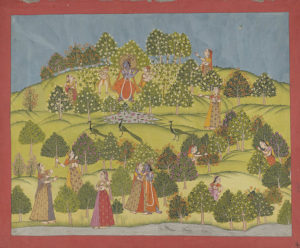
Author: Bodleian Library Oxford; Krishna (with blue complexion and yellow garments) moves through the painting, thereby telling a narrative
The concept of rasa is fundamental to many forms of Indian art, and can be found in dance and performance, music, musical theatre, literature as well as cinema.
The Rasas were first described by Bharata Muni भरत मुनी, an ancient Indian musicologist and theatrologist, in the Nāṭya Śāstra (Sanskrit: नाट्य शास्त्र, Nāṭyaśāstra), a Sanskrit Hindu text on dramatic theory and the performing arts, written between 200 BCE and 200 CE. According to this text, there are 8 original rasas, each of which has an associated deity and a specific colour. Later authors have added a 9th rasa, plus some additional rasas.
- Shringaram (शृङ्गारं) Love, attractiveness, erotic. Deity: Vishnu. Colour: green; the erotic rasa is blue-black. Considered the ‘king of rasas‘.
- Hasyam (हास्यं) Laughter, mirth, comedy, comic. Deity: Ganesha. Colour: white.
- Raudram (रौद्रं) Fury. Deity: Rudra. Colour: red.
- Kāruṇyam (कारुण्यं) Compassion, tragedy, pathetic. Deity: Yama. Colour: dove-coloured (grey-white).
- Bībhatasam (बीभत्सं) Disgust, aversion, abhorrent, shocking, odious. Deity: Shiva. Colour: blue
- Bhayānakam (भयानकं) Horror, terror, fear, terrible. Deity: Kala. Colour: black
- Vīram (वीरं) Heroic mood. Deity: Indra. Colour: wheatish brown (yellow, ochre)
- Adbhutam (अद्भुतं) Wonder, amazement, wonderful, wondrous. Deity: Brahma. Colour: yellow
- The 9th rasa is Śāntam (शांता) Peace or tranquility, quiescent. Deity: Vishnu. Colour: perpetual white (silvery, the colour of the moon and of jasmine)
The 9th Shanta-rasa is simultaneously seen as an equal member of the rasas, but also as distinct, since it represents the clearest form of aesthetic bliss and has been described as “as-good-as but never-equal-to the bliss of Self-realization experienced by yogis”.
In Indian art, the rasas become apparent, for example in the colour in which a certain deity is depicted which hints at the predominant character trait associated with this deity, or in the colour of the aura of a person. For instance, a black aura indicates a frightened person, and a red aura indicates that the character is angry. The god Krishna, who is the archetypal lover and hero, is always depicted with a blue-black complexion and yellow garments.
Two additional rasas appeared later on, in particular in Indian literature. These are:
- Vātsalya (वात्सल्य) Parental Love
- Bhakti (भक्ति) Spiritual Devotion
However, a specific deity or colour has not been assigned to these two rasas.
Another important term in Indian art is Murti (Sanskrit: मूर्ति Mūrti) which usually refers to any solid object that has a definite shape and is made from material elements like wood, stone, pottery or metal. The term murti basically refers to any statue, or to an image or idol of a deity or person, as well as to any incarnation, embodiment, manifestation and appearance of a deity. Murti constrasts with the immaterial world of mind and thought of ancient Indian literature.
Medieval Hindu texts like the Puranas (Sanskrit: पुराण, purāṇa, lit. ‘ancient’, ‘old’), the Agamas (Sanskrit: आगम, lit.’tradition’, from the verb root गम gam meaning ‘to go’ and the preposition आ aa meaning ‘toward’ -> ‘that which has come down’) and the Samhitas (Sanskrit: संहिता, saṁhitā, lit. ‘put together, joined, union’) described the proper proportions, positions and gestures (mudra) for the murti.
The expressions in a Murti vary, but there are two major categories in Hindu iconography:
- Raudra रौद्र (lit. dire) or Ugra उग्र (lit. fierce, violent, furious) symbolism – used to express fear, violence and destruction (deities: Kali, Durga). Typical elements include adornment with skulls and bones, weapons, and wide, circular eyes. Raudra deity temples were invariably located outside of villages or towns, and in remote areas of a kingdom. Ugra images were worshipped by soldiers before going to war, or by people in times of distress.
- Shanta शांता (lit. peaceful) and Saumya सौम्या (lit. gentle, benign, kind) symbolism – used to express joy, love, compassion, kindness, knowledge, harmony and peace (deities: Lakshmi, Saraswati). These temples were predominantly located inside towns and villages. Saumya images symbolize peace, sensuality, knowledge, music, wealth, flowers, etc.
Apart from anthropomorphic murti, some Hindu traditions prefer aniconism, that is the absence of figurative representations of the natural or supernatural world. Here the murti take the shape of the linga for Shiva, the yoni for Devi, and the shaligrama for Vishnu.
A murti may be found inside or outside homes as well as temples, and in some cases it can just be a landmark. A murti is often considered as an embodiment of the divine or Brahman, and may be treated as a welcome guest in homes and serve as a participant in Puja rituals.
The artist, कलाकार kalakar, or artisan who makes any works of art or crafts, including murti, is known as Shilpin शिल्पिन्, (for a male artist) or Shilpini शिल्पिनी (for a female artist). The Shilpins design the murti according to the rules of canonical manuals like the Agamas and the Shilpa Shastras. The term Shilpa Shastras (Sanskrit: शिल्प शास्त्र śilpa śāstra) literally means the Science or Discipline of the Shilpa (i.e. the arts and crafts). Shilpa शिल्प refers to any art or craft, while Shastra शास्त्र means ‘iconography’, ‘a work of scripture’ or ‘discipline’. Man-made works of art are termed Shilpani शिल्पनि. The Shilpa Shastra is an umbrella term for various Hindu treatises and manuals on the arts and crafts, which outline Hindu iconography, design principles and rules, composition, the ideal proportions for human sculptures, as well as the principles and rules of architecture.
The Brihat Samhita बृहत् संहिता (lit. ‘Large Codex’), a 6th-century encyclopedia covering a wide range of topics from astrology to horticulture to murti and temple design, and the 6th-century treatise Manasara-Shilpashastra मनसारा शिल्पशास्त्र (literally: ‘treatise on art using the method of measurement’), specify 9 materials that can be used for the creation of murti: stone पत्थर patthar, wood लकड़ी lakadee, copper तांबा taamba, gold सोना sona, silver चांदी chaandee, earth (= clay मिट्टी mittee or terracotta टेरकोटा), sudha सुधा (a type of mortar plaster or stucco), sarkara सरकार (gravel, grit), and abhasa आभास (various types of marble or stones, which have a range of colours and opacity). Metal murti are often made from a special alloy called panchaloha, which is believed to have auspicious properties and is considered of sacred significance. Panchaloha (Sanskrit: पञ्चलोह), which is also known as Panchadhatu (Sanskrit: पञ्चधातु, lit. ‘five metals’), is an alloy consisting of 5 metals, namely gold (Au), silver (Ag), copper (Cu) iron (Fe) and lead (Pb); the lead is often replaced by tin (Sn) or zinc (Zn).
References: Indian Art, by Vidya Dehejia, Phaidon Press, London, 1997
https://en.wikipedia.org/wiki/Indian_aesthetics
https://en.wikipedia.org/wiki/Shilpa_Shastras
https://en.wikipedia.org/wiki/Murti
Vocabulary: ‘The weather’ in Celtic languages
Today’s blog post is continuing our series on the comparison of vocabulary of closely related languages and is taking us to the British Isles again, as well as to Brittany (Bretagne) in France, and to the various Celtic languages spoken there, namely Welsh, Irish and Scottish Gaelic, as well as Cornish and Breton. Our topic today is the weather and the most important words related to it. Both Welsh (Cymraeg) and Cornish (Kernewek) belong to the Brittonic group of the Celtic languages (to which also Breton Brezhoneg belongs), and Irish (Gaeilge) and Scottish Gaelic (Gàidhlig) belong to the Goidelic group (to which also Manx Gaelg belongs).
The terms for these weather-related words in Cornish/Kernewek:
weather – kewer, sunshine – Howl, wind – gwyns, rainbow – kammneves, rain – glaw, clouds – kommol, thunder – taran, thunderstorm – hagarawel derednow, lightning – lughes, snow – ergh, hail – keser
and in Breton/Brezhoneg:
the weather – an amzer, sunshine – Heol, wind – avel, rainbow – kanevedenn, rain – glav, cloud – koumoul, thunder – taran, thunderstorm – arnev, lightning – luc’hed, snow – erc’h, hail – grizilh
Focus on Architecture: Chinese dougong brackets
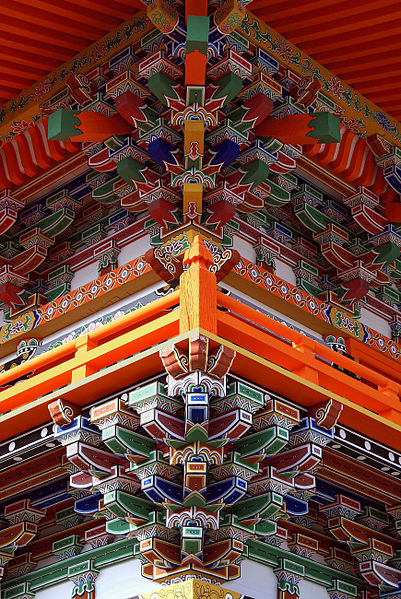
Author: 663 highland via wikipedia Dougong brackets of the Sagami Temple in Japan
Today’s blog post is taking us to East Asia again, namely to China 中国 and a typical feature of Chinese architecture 中国建筑 (Zhōngguó jiànzhú), the dougong brackets (斗拱 dǒugǒng lit.’block [and] cap’).
Dougong brackets 斗拱 are a characteristic feature of Chinese wooden architecture and are a component of the network of wooden supports of a traditional timber frame structure. These interlocking brackets are necessary because the walls of these buildings are usually curtain walls 幕墙 Mùqiáng, i.e. they are not load-bearing, and often consist of latticework 格子gézi, mud 泥 ní or other more fragile materials. The walls in these buildings, instead of supporting weight, have the function of delineating space.
The weight of the roof and structure is supported by wooden columns 柱 zhù onto which a massive wooden block, the 斗 dou, is placed to form a solid base for the curved brackets 拱 gong, which in turn support the roof beams. The use of dougong brackets made a reduction of the number of pillars possible since each bracket increases the area of support of each column and transfers the weight of the horizontal beams to the vertical pillars over a larger area. Adding multiple interlocking dougong further reduces the strain on the horizontal beams and also makes the wooden structures more flexible and therefore more earthquake resistant.
There are two types of bracket sets, the 偷心 Tōu xīn (lit.’stolen heart’) and the 计心 jìxīn (lit.’the added heart’). The presence or the absence of the ‘heart’ refers to whether a lateral bracket – 拱 gong – passes through arms that lie perpendicular to the building plane or not. The use of 计心 jìxīn, or the ‘added heart’ bracket, enables several tiers of bracket arms to be added to a building (these are always perpendicular to the building plane). Both the 计心 jìxīn (‘added heart’) and 偷心 Tōu xīn (‘stolen heart’) brackets can feature an 昂 ang (lit. ‘to hold high, to raise, to lift’), i.e. a cantilever or level arm.
For more information:
https://en.wikipedia.org/wiki/Dougong
https://zh.wikipedia.org/wiki/File:Wood_structure.png
For those of you who can read Chinese: https://zh.wikipedia.org/wiki/%E6%96%97%E6%A0%B1#.E6.98.82
Chinese article on Dougong brackets (with illustrations) http://web2.nmns.edu.tw/Web-Title/china/A-3-1-4_display.htm
How to avoid mixing up closely related languages
Today’s blog post continuous our series on efficient learning and revision strategies in language learning and will show you some simple methods with which you can avoid mixing up closely related languages.
A simple but very efficient method of learning or revising closely related languages is to use textbooks and learning materials written in one of the languages to learn or revise the other one. To give an example, if you tend to mix up, let’s say, Spanish and Portuguese, or Spanish and Italian, then use some materials that are written in your ‘stronger’ language of the two to revise or learn the other. The great advantage of this method is that you see the two languages directly side by side in comparison. If you compare the vocabulary when revising, you will see exactly where the two languages converge and use a very similar or even identical word or expression, and where they depart and use a quite different word or phrase. A nice side effect of this technique is also that you can practice and revise two languages at the same time. And in the case that you really do not understand a word or phrase in either of the languages, you can always look up that word or phrase in a dictionary in your native tongue. A further advantage of using materials written for speakers of one of the two languages for learning the other is that these books and resources will usually point out the pitfalls precisely for speakers of one of the languages in learning the other and often contain tips on which aspects in particular to pay attention to avoid any such mistakes and ‘false friends’.
If you prefer online-resources to books, then you can use the same technique on duolingo, both for revision and to learn a new language. One of the nice things about this platform is that many languages are available in a wide range of language combinations, especially the more popular languages, so that you can choose one that suits you best, e.g. learning Italian via Spanish, or a Spanish-Portuguese combination, etc. The system will then show you exactly where the sentences in both languages converge and depart in their vocabulary and grammatical structures. Those readers who know the platform will know how strict the system is about a very precise translation of the words and sentences. If you practice regularly in this way, you will be far less likely to mix up the similar languages over time.

